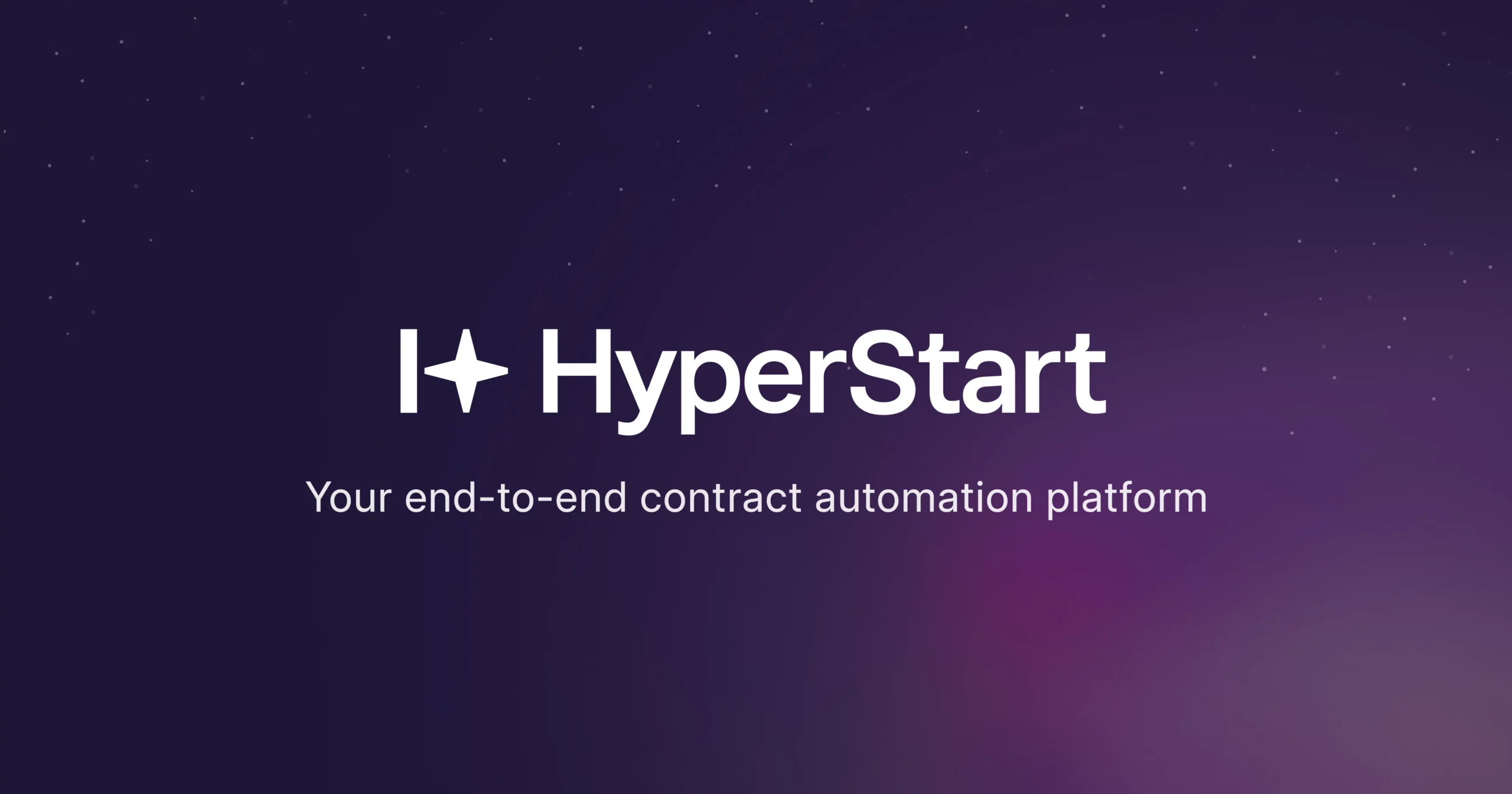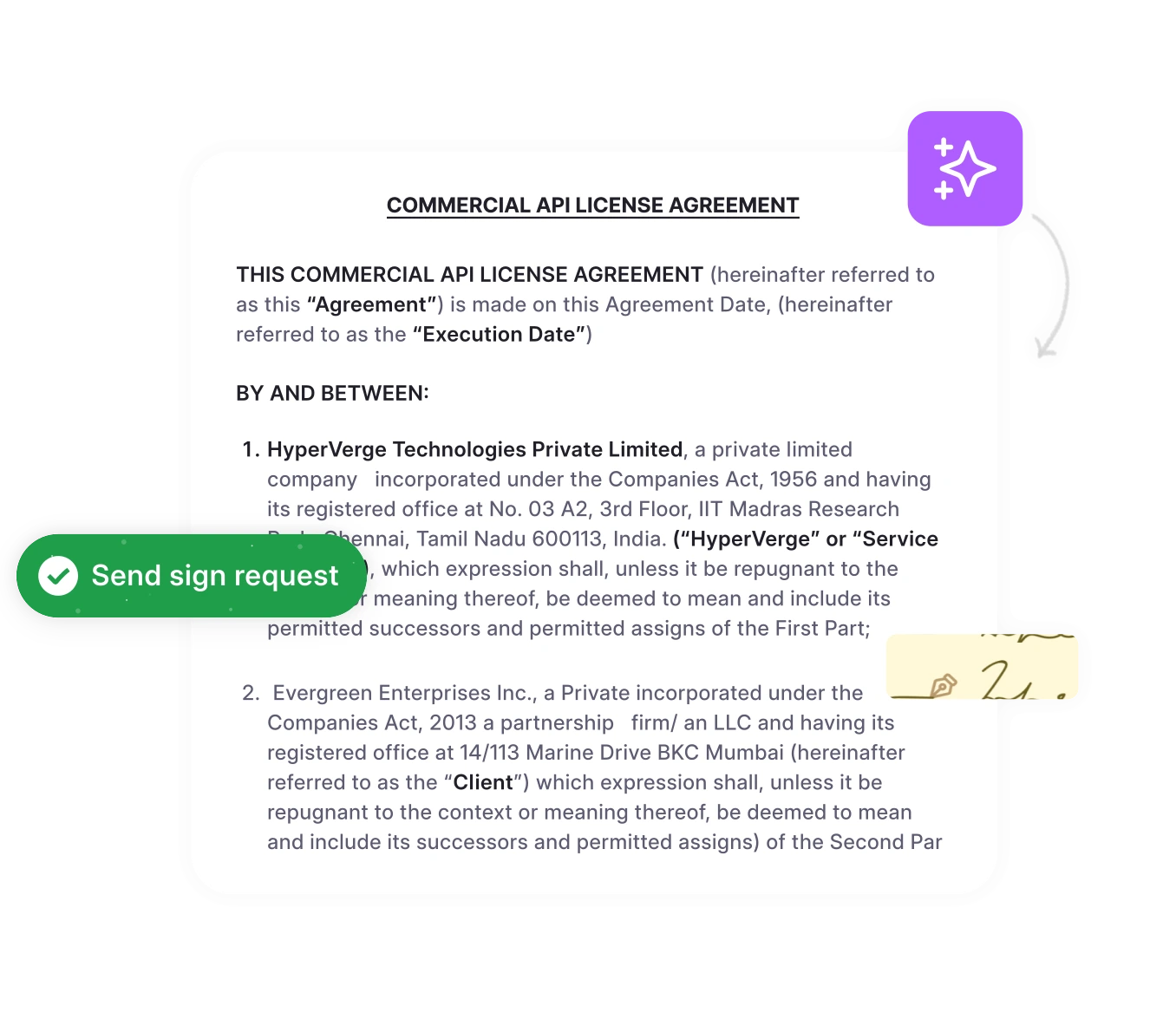Contract management involves drafting, negotiating, compliance, renewals. Contract annexes may be confused with appendices or addenda. But each serves a distinct legal purpose that impacts clarity and enforceability.
Whether you’re a General Counsel managing multi-party agreements or a legal operations leader streamlining workflows, understanding how to use and manage contract annexes effectively is crucial. Done right, annexes help organize supporting documents without overloading the main contract. Done wrong, they introduce ambiguity and compliance risks.
This guide breaks down everything you need to know about contract annexes, from what they are, when to use them, how to reference them correctly, and how to manage them efficiently using modern CLM systems, all while ensuring legal accuracy and operational consistency.
What is a contract annex?
A contract annex is a supplementary document that forms an integral part of the main contract, containing additional details, specifications, or technical information that support the primary agreement. Unlike standalone documents, a contract annex must be explicitly referenced within the main contract to maintain legal validity and enforceability.
Contract annexes serve as extensions of the main agreement, providing detailed information without cluttering the core contract terms. They’re particularly valuable for complex commercial agreements where technical specifications, pricing schedules, or detailed procedures need to be documented separately while remaining legally binding as part of the overall contract.
Key characteristics of contract annexes:
- Properly referenced in the main contract
- Contain supplementary information that supports primary terms
- Must be explicitly incorporated by reference
- Typically include technical specifications, schedules, or detailed procedures
- Cannot modify core contract terms without proper amendment procedures
While the terms annex, appendix, and addendum are often used interchangeably, they serve distinct purposes in legal documents. Understanding these differences is key to structuring contracts correctly and avoiding confusion.
Contract annex vs appendix vs addendum
Here’s a table to clarify the differences between attachments that go with the main contract. Contract attachments carry different names—exhibit, schedule, addendum, annex—often used without distinction. While terminology varies by jurisdiction and industry preference, what matters is functional clarity: each attachment must serve a defined purpose within your agreement’s structure.
Understanding these distinctions is integral for proper documentation and legal contract compliance.
| Document Type | Purpose & Definitions | Legal Status | Use case |
| Contract Annex | Provides supplementary details that expand on existing contract terms without modifying them | Legally binding when incorporated by reference | Technical specifications for building floor plans in a commercial lease agreement |
| Contract Appendix | Contains additional information that provides context but creates no obligations | Primarily informational | Property history, explanations, and tenant background information in a rental agreement |
| Contract Addendum | Modifies, adds to, or changes existing contract terms | Alters the original document | Scope changes and new obligations on a service agreement or an employment contracts |
Standardize how you manage contract annexes
With HyperStart, automate annex management and create consistent document workflows across all agreements.
Book a DemoOnce you know what an annex is and how it differs from other attachments, the next step is knowing when to use it. Let’s explore the specific scenarios where including an annex adds clarity and legal value.
When to use contract annexes?
Contract annexes serve specific business purposes and are most effective in particular scenarios. Understanding when to use annexes versus other document types can streamline your contract structure and improve legal clarity.
1. Complex technical agreements
Software licensing agreements, manufacturing contracts, and consulting agreements often require detailed technical specifications that would overwhelm the main document. A contract annex allows you to maintain clean, readable core terms while providing necessary technical detail.
For example, a software implementation contract might reference “Annex A: Technical Specifications” that details system requirements, integration protocols, and performance benchmarks without cluttering the main agreement with technical jargon.
2. Multi-phase projects
For straightforward agreements under $50K, extensive annexes may add unnecessary complexity.
Construction contracts, large-scale consulting engagements, and product development agreements often involve multiple phases with varying requirements. Contract annexes can outline phase-specific deliverables, timelines, and acceptance criteria.
3. Regulatory compliance requirements
Industries like healthcare, financial services, and manufacturing often require detailed compliance procedures. Rather than embedding lengthy regulatory requirements within the main contract, annexes can provide comprehensive compliance frameworks while keeping the primary agreement focused on commercial terms.
Read more on Best Contract Compliance Management Software.
The new Standard Contractual Clauses introduce three mandatory annexes. Annex 1 mirrors previous DPA schedules—detailing data categories, processing activities, and party information. Annex 3 requires granular subprocessor specifications beyond earlier requirements.
Annex 2 demands comprehensive disclosure of technical and organizational security measures. Completing this requires significant IT/security team involvement. In B2B transactions, customers often provide their Annex 2 expectations, requiring careful review against actual practices.
4. Pricing and payment schedules
Complex pricing structures, volume discounts, and milestone-based payments can be documented in pricing annexes. This approach allows for easy updates to pricing terms without requiring contract amendments.
Knowing when to use an annex is only half the equation. Legal teams must also ensure they format and reference annexes correctly within the contract to maintain consistency and enforceability.
How to create and reference contract annexes?
Proper creation and referencing of contract annexes are essential for legal enforceability and operational effectiveness. Follow these 5 best practices to ensure your annexes serve their intended purpose.
1. Explicit reference requirements
The main contract must explicitly reference each annex to ensure legal validity. Using clear, unambiguous language is a good practice.
“The technical specifications detailed in Annex A, attached hereto and incorporated by reference, shall govern all performance requirements under this Agreement.”
2. Consistent numbering and naming
Establish a clear naming convention for all annexes. Use sequential lettering (Annex A, Annex B) or title descriptions (Annex 1: Technical Specifications, Annex 2: Pricing Schedule) consistently throughout your contract suite.
3. Integration clauses
Include integration clauses that clarify the relationship between the main contract and its annexes. For example:
“This agreement, including all annexes referenced herein, constitutes the entire agreement between the parties and supersedes all prior negotiations, representations, or agreements relating to the subject matter hereof.”
4. Amendment procedures
Clearly define how annexes can be modified. Some organizations allow annex modifications through simplified procedures, while others require full contract amendment processes. Your approach should align with the sensitivity and importance of the information contained in each annex.
5. Version control
Implement robust version control procedures for annexes, especially in long-term contracts where technical specifications or pricing may change over time. Consider including:
- Version numbers and dates
- Change tracking procedures
- Approval requirements for modifications
- Distribution protocols for updated versions
Answering the same questions every day?
Automate self-serve contracts with precedent templates and clauses so you save time and close deals faster.
Book a DemoIncorrectly written legal writing or referenced annexes can lead to enforceability issues. To prevent that, legal professionals must follow applicable legal standards and proven drafting practices. Here’s what to keep in mind.
What are the legal requirements and best practices for a contract annex?
Getting contract annexes legally right isn’t just about compliance—it’s about building agreements that work in practice while protecting your company from risk.
Here are the 5 essential legal requirements for contract annexes:
1. Master proper incorporation by reference standards
Courts uphold contract annexes when they meet four requirements: express reference in the main document, clear identification of the annex, intention to make it legally binding, and reasonable accessibility to all parties. When you state “Annex A is incorporated herein and forms an integral part of this Agreement,” you prevent critical specifications from being dismissed as non-binding during disputes.
2. Establish clear consistency and conflict resolution rules
Smart legal teams establish precedence rules upfront: main contract terms take precedence over annexes, later-dated documents supersede earlier versions, or address annex provisions without overriding key terms. When your pricing annex contradicts payment terms, everyone should know immediately which provision governs without requiring legal interpretation.
Order of precedence clauses are essential navigational tools, guiding us through contract ambiguities by establishing a hierarchy or priority amongst documents. They caution that even with such clauses, ambiguities can persist, but these clauses remain critical to reducing the risk of disputes and operational confusion in multi-document contracts.
3. Make strategic signature and execution decisions
Whether annexes need separate signatures depends on information sensitivity, modification frequency, regulatory requirements, and internal approval processes. Technical annexes that rarely change might not need separate signatures, while pricing schedules that update quarterly benefit from streamlined execution procedures.
Draft your standard Annex 2 proactively. This accelerates negotiations and demonstrates security maturity to data processors, while ensuring alignment between documented and actual security practices.
4. Implement robust document security and access controls
Contract annexes often contain sensitive commercial information—pricing, specifications, or proprietary processes. Implement role-based access controls, encryption for storage, audit trails for modifications, and reliable backup procedures. When annexes contain trade secrets, treating document security as an afterthought creates significant business risks.
5. Build scalable governance and compliance frameworks
Manual annex oversight becomes impossible as portfolios grow. Build frameworks that scale: standardized contract templates, automated approval workflows, regular compliance audits, and clear ownership assignments. This prevents critical annexes from becoming legally outdated because no one was responsible for maintaining them.
Organize every contract annex with confidence
Organize and track contract annexes in hierarchical contract families. Prevent version mismatches and oversight.
Book a DemoEven with well-drafted annexes, managing them across multiple contracts and versions can be challenging. Let’s look at how CLM software simplifies annex handling, ensures version control, and enhances legal compliance.
How to manage contract annexes with CLM Systems
Contract annexes contain critical business details like transaction and contract term information. Traditional tracking across hundreds of agreements is liable to missed opportunities. Here are 4 ways CLM platforms transform annex management from scattered chaos into automated workflows.
1. Smart annex detection and automated extraction
CLM software automatically scans many contracts to identify multiple annexures and extract key business information. AI-powered metadata extraction captures pricing schedules, payment terms, technical specifications, and compliance obligations without manual data entry. An advanced CLM platform like HyperStart processes complex annexes instantly with accuracy, learning from contract patterns to continuously improve extraction precision and ensure consistent tracking across entire contract portfolios.
2. Intelligent organization and workflow automation
CLM platforms create automated categorization systems that organize annexes by content, contract type, and business purpose. Legal teams can streamline requests with intake forms, real-time collaboration capabilities, while business teams receive automated notifications when technical specifications or pricing schedules change. Integration workflows connect annex data directly to existing CRM, ERP, and procurement systems for seamless signature collection and business operations.
3. Advanced version control and change management
CLM systems provide comprehensive version tracking that maintains complete audit trails for every annex modification. Automated change detection identifies when pricing schedules, technical specifications, or compliance requirements are updated, while smart contract approval workflows route changes to appropriate stakeholders. Legal teams can instantly compare annex versions and track modification history with full regulatory compliance documentation.
4. Proactive monitoring and compliance alerts
Advanced CLM systems deliver intelligent contract obligation tracking that monitors critical dates and requirements buried within contract annexes. Automated alerts notify teams of upcoming renewal dates in pricing annexes, compliance deadlines in regulatory attachments, and performance reviews in service level agreements. Real-time dashboards provide instant visibility into annex status, modification history, and risk levels with predictive analytics.
CLM software transforms contract annexes from hidden administrative burdens into visible, manageable business assets that drive better decisions and stronger partnerships.
Streamlining contract annex management with HyperStart
HyperStart’s AI-powered contract management platform streamlines how legal teams handle complex contracts with multiple annexes. Our system automatically identifies, extracts, and organizes annex information, reducing manual review time significantly.
Key benefits include:
- Instant annex recognition: AI automatically identifies and categorizes contract annexes
- Automated metadata extraction: Key information from pricing schedules, technical specifications, and compliance requirements is extracted automatically
- Intelligent search: Find specific annex information across your entire contract portfolio in seconds
- Proactive monitoring: Never miss critical dates or obligations buried in contract annexes
Ready to streamline your contract management? See how HyperStart can streamline your contract annex workflows and eliminate manual tracking processes.












